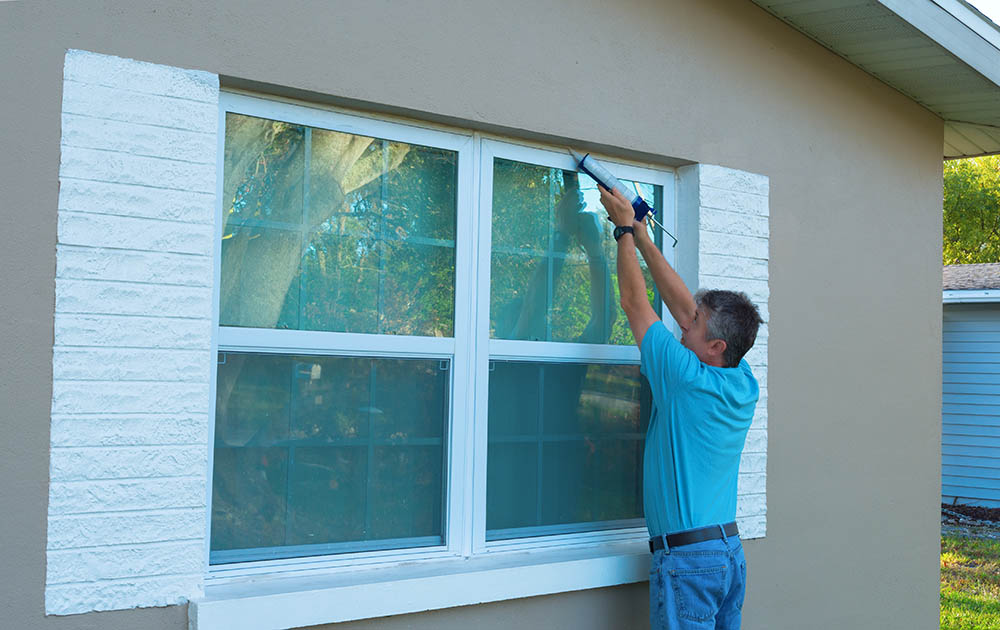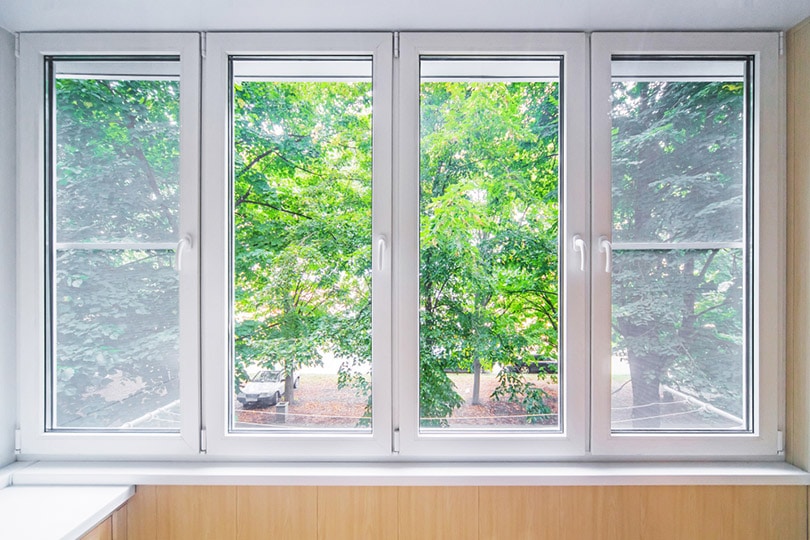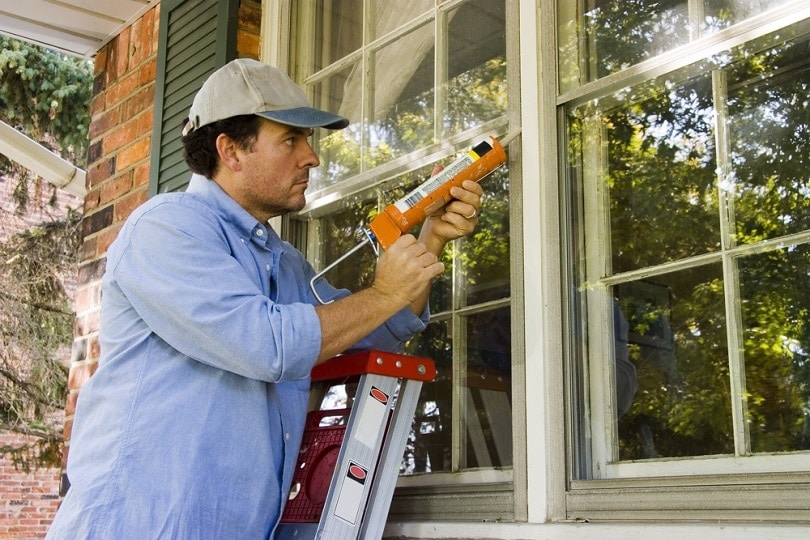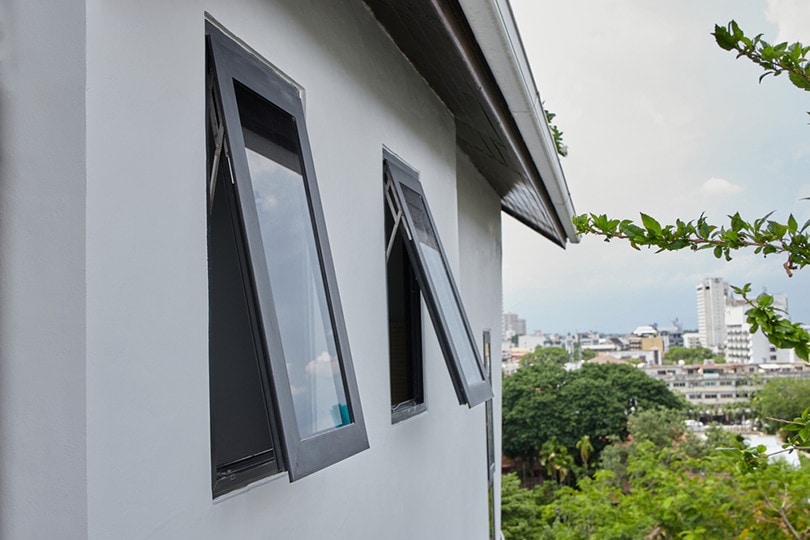How to Fix Condensation on Windows: Facts, FAQs & Step-by-Step Guide
-
Pete Ortiz
- Last updated:

Some people rarely think about the cause of condensation on windows. Most homeowners don’t realize that window condensation can signify a bigger problem that needs fixing.
Condensation happens when warm moist air comes into contact with a cold surface. The cold surface is your glass window. Usually, it takes place on the inside. It happens mostly during winter when the air inside has a higher temperature than the outside air.
In this article, we’ll discuss several causes of condensation in windows and give a step-by-step guide on how to fix them.
Let’s jump right in!
What Causes Condensation on Windows?
Before you start fixing condensation in your windows, it’s crucial to identify what causes it. Condensation happens when warm air meets cold air. When it comes to your windows, many scenarios can cause condensation.
Indoor Air Meets Outdoor Air
Humidity is often the culprit when we talk about condensation in windows. When warm moist air inside your home comes into contact with colder outdoor air, condensation is likely.
Window Panes Don’t Match Outside Temperature
Condensation takes place between panes of glass in double or triple-paned windows. It indicates that you may have a broken seal or an issue with insulated glass.
In this case, the outer pane is much colder than the inner pane. It causes water vapor to condense between the glass panes.

Household Activities
Using humidifiers, taking hot showers, and cooking increases indoor moisture levels.
Poor Ventilation
Ventilation helps move stale air outdoors and brings fresh air inside. Without it, moist air lingers inside your home instead of escaping through a vent or window.
If you notice condensation in your windows, address it early. If not, it may lead to mold growth and more extensive damage.
What Causes Condensation in Double-Glazed Windows?
Many different factors can cause condensation to form in double-glazed windows. But the main reason is the moisture trapped inside a sealed unit. It’s designed to prevent air from escaping. Also, it keeps water out.
Double glazing consists of two panes of glass with a gap between them. They are sealed together as one unit, trapping the moisture inside. The units are made of many layers of glass, an inert gas, and insulated spacer bars.
The gas used in the sealed window unit is usually argon. This gas is denser than air. So, it doesn’t conduct heat well. Keep it above dew point temperature all year round to avoid water forming on the inside pane of glass.
When it drops below this temperature, water will condense on the inside pane (the warm side), where it forms water droplets. These droplets run down the glass-like water on a window after rain.
The Step-By-Step Guide on How to Fix Condensation on Windows
Condensation can form anywhere with high levels of moisture in the air. It also takes place on a wide range of surfaces. But it’s usually a problem in windows.
Here’s the step-by-step guide to fixing condensation in windows.
What Do You Need?
- Dehumidifier
- Caulk
- Weather-strip
- Tumble dryer
- Extractor fan
1. Inspect Your Windows
There are two types of condensation you may be dealing with.
The most common form is condensation inside the glass panes. It doesn’t cause any damage, but it’s annoying and may make the window look dirty.
Also, there is condensation between the glass panes. This condensation can lead to mold or rot problems if you have double-pane windows. It can also indicate that your window seal has failed and needs replacement.
If you’re unsure which type of condensation you’re dealing with, look for an identifying label on your windows. If you can’t find one, call a professional window repair service to inspect your windows.
2. Weatherize Your Windows

The best way to prevent condensation on windows is to increase the amount of insulation around them. It’ll keep indoor air from coming into contact with the cold glass.
If you have older windows that are drafty, warped, or inefficient, address this issue. It will go a long way toward reducing condensation problems. First of all, apply weather stripping around the sides of each window frame where it touches the wall.
You can also use caulk to fill any cracks around the window frames. If a window is old and worn down, consider replacing it altogether.
You can also install storm windows on the exterior of your house during the winter months. They’ll provide another barrier between cold outdoor air and warm indoor air. Storm windows are less expensive.
3. Remove Easy-to-Spot Humidity Sources
There are several things you can do to get rid of sources of humidity. First of all, dry damp clothes outside, not in bathrooms or kitchens.
Alternatively, use a tumble dryer. Also, cover pans when cooking. You can also boil only as much water as you need for specific use to stop steam from building up in your kitchen.
Another important measure is to keep bathroom doors closed after showering. Also, run an extractor fan to stop steam from building up in your bathroom. Ensure it’s running for at least 20 minutes after your shower.
Keep internal doors open when possible to allow air to circulate instead of getting trapped between rooms. All these are sources of humidity that can cause condensation in your windows.
4. Inspect for Other Ventilation Problems

Have you reduced humidity but still see condensation on your windows overnight? If yes, you may need to increase ventilation. Open a window or two for ten minutes each day or open the closet door.
This way, moist air can escape. Inspecting for other ventilation problems is also a great idea if you still see condensation on your windows after reducing humidity.
If you don’t have your laundry dryer vented outside, now’s the time to get it done. The dryer removes moisture from clothing and puts that moisture back into the house through the venting system. It can cause window condensation problems.
Alternative Methods of Fixing Condensation on Your Windows
Apart from the steps above, there are other effective methods of fixing condensation in windows, as seen below:
Use Window Insulation Kits
You don’t have to open your windows to get rid of condensation. Try using window insulation kits instead. These kits include two layers of plastic. They sandwich a bubble-wrap-like material between them. The result is an insulating layer for your windows.
Clean the window and remove any old insulation before using the kits. Then, place the plastic sheeting over the window.
You can use a hairdryer to shrink the plastic. This way, it fits snugly against the glass. Then, tape it in place with special double-sided tape.
If you’ve got delicate curtains or drapes on your windows, remove them before installing the insulation. Once you’ve installed the sheets, you can put them back.

Move Your Houseplants
Houseplants are notorious moisture producers. Keep them away from your windows to avoid adding a lot of moisture to the air, especially during cold weather conditions.
Buy an Air-to-Air Exchanger
An air-to-air exchanger is like an extractor fan. It doesn’t extract the moist air outside. Instead, it replaces it with warm, dry air from another part of the house.
These units are much more energy-efficient than a dehumidifier. They are also cheaper and don’t take up much space.
Open Your Windows
It seems like an obvious solution, but it’s one that many people overlook. Opening the windows provides a simple method of ventilation. It reduces the severity of condensation.
When you open your windows, you allow fresh air to flow through your home. This way, you make the interior environment less humid. Ensure you open your windows when it’s not too cold.

Lower the Humidifier
If you are using a humidifier, lower it so that the air has less moisture. Also, make sure you don’t set your humidifier too high. It can make it work harder than it needs to. Also, it’ll produce more moisture than necessary for your home’s humidity level.
Last Resort: Get Professional Help
If you have tried all the steps to fix the issue and have not had any luck, it’s time to call in a contractor or a professional. Sometimes there’s more than meets the eye.
A professional can tell you if there are other issues causing condensation in your windows. Also, they can inspect them for problems and recommend solutions.
A window professional can also handle any repair needs. They’ll also advise on how to make your home more energy-efficient.
 Conclusion
Conclusion
If you’re experiencing problems with condensation in the windows, don’t worry; it is a common problem, and it’s simple to fix.
Having condensation on your windows is a sure sign that there’s too much moisture in the air. It can happen in any room. But most often, it occurs in bathrooms, kitchens, and laundry rooms.
Follow these steps, and you’ll soon be on your way to eliminating condensation in your home for good. Once again, you can experience the sublime pleasure of seeing outside without going outside.
Featured Image Credit: Jumpstory
Contents


